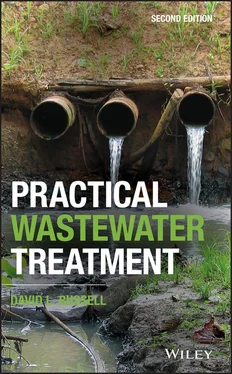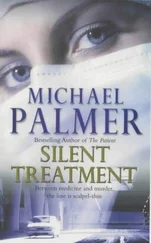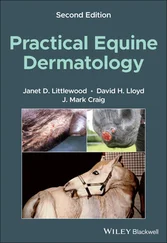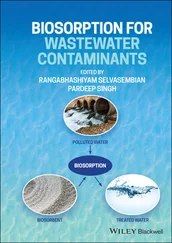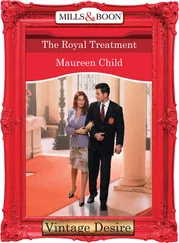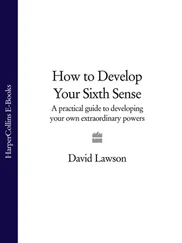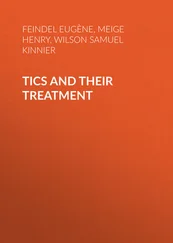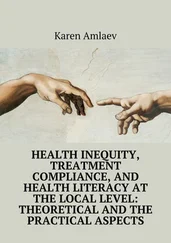1 Cover
2 Acknowledgments Acknowledgments I have been privileged to have known several giants in the environmental field. Many of them have already passed on, but their contribution of time and effort to the field of environmental engineering cannot be overlooked. Standing on the shoulders of these giants has given me a platform to be able to look out at the field and write a series of environmental books on various topics, including this work. I wish to acknowledge their contributions to the field of environmental engineering at this point: Professor Richard S. Englebrecht, former head of the Environmental Engineering Department at the University of Illinois, Urbana, for encouragement to follow my dreams. Dr John Austin (U of I), for assistance at a difficult time in my academic career. Dr Benjamin Ewing (U of I), for invaluable advice on career selection. Dr V. T. Chow (U of I), for his body of work on open channel flow and hydrology. And some really great bosses over the years: Leon Mattioli and Richard Sobel of Allied Chemical Specialty Chemicals Division, Claymont, DE, and Morristown, NJ. J. S. Lagarias, and Dr Louis McCabe of Resources Research, Inc. (Division of Hazelton Laboratories, Reston, VA). Dr Robert Irvine, PhD, rediscoverer of the Sequencing Batch Reactor. Dr Pieter VanRolleghem, mathematician, engineer, and creator of WEST software. And some very dear friends and professional associates: Dr Charles Calmbacher, PhD, CIH David R. Vaughn, PE Dr Jeremy Dudley, PEng Thomas McGowan, PE Dr Donald Ray, PE Leroy Staska Thank you all. David L. Russell, PE Lilburn, Georgia Global Environmental Operations Inc.
3 Preface
4 1 Composition, Chemistry, and Regulatory Framework 1.1 Water Composition 1.2 Water Characteristics and Physical Properties 1.3 Solution Chemistry: Salts and Ions in Water 1.4 Disassociation Constants for Weak Acid and Bases 1.5 Sources of Water 1.6 Analytical Methods 1.7 Laboratory Guidance 1.8 Regulatory Framework of Water Regulations 1.9 Water Use Data and Some Discharge Characteristics
5 2 What is Water Pollution? 2.1 Pollution Defined 2.2 Chemical Industry 2.3 Cooling Towers 2.4 Boilers 2.5 Iron and Steel Industry 2.6 Mining Industries 2.7 Fracking for Oil and Gas 2.8 Petroleum Exploration 2.9 Petroleum Refining 2.10 Agricultural and Food Processing 2.11 Crop Water Use 2.12 Vegetable and Fruit Processing 2.13 Animal Farming and Concentrated Animal Feeding Operations 2.14 Livestock and Concentrated Animal Feeding Operations 2.15 Slaughterhouse and Meat Packing and Processing Wastes 2.16 Dairy Wastes 2.17 Measuring Pollution 2.18 The Sampling Plan 2.19 Analytical Methods and the Role of the Laboratory
6 3 Groundwater and its Treatment 3.1 Hydraulics of Groundwater 3.2 Soil Particles and Surface Areas 3.3 Well Hydraulics 3.4 Well Packing and Screens 3.5 Trenches 3.6 Compressible Flow 3.7 Groundwater Treatment
7 4 Statistics of Measurements 4.1 Introduction to Statistical Measurements: Background 4.2 Significant Figures 4.3 Probable Error 4.4 Repeat Measurements 4.5 Net Process Measurements 4.6 Statistical Distributions for Environmental Events 4.7 Black Swans and Data Analysis
8 5 The Flow of Water and Wastewater 5.1 Statistical Basis for Error Estimation 5.2 Open Channel Hydraulics 5.3 Froude Number 5.4 Types of Flowmeters 5.5 Weir Plates 5.6 Alignment Errors 5.7 Samples and Sampling 5.8 Conclusion
9 6 Troubleshooting and Emergency Planning 6.1 Fault Tree Analysis 6.2 Reverse Fault Tree Analysis 6.3 Analysis: The Five Whys 6.4 Regulatory Requirements 6.5 Software Solutions 6.6 Emergency Response Planning
10 7 Chemistry and Analyses 7.1 Aquatic Testing 7.2 Bacterial Testing 7.3 Dissolved Organic Materials – BOD, COD, and TOC 7.4 Common Ion Species 7.5 Hardness 7.6 Chemical Water Softening 7.7 Nitrogen 7.8 Phosphorus 7.9 Sulfur 7.10 Chlorine 7.11 Other Halogens 7.12 Metals 7.13 Solids 7.14 Organic Chemicals
11 8 Basic Water and Wastewater Treatment Techniques 8.1 Removal of Metals 8.2 Chromium 8.3 Arsenic 8.4 Cadmium 8.5 Iron 8.6 Zinc 8.7 Mercury 8.8 Radium 8.9 Anions 8.10 Solvents and Oils 8.11 Chlorinated Organics
12 9 Biological Wastewater Treatment9.1 The Microbial World 9.2 Order of Treatment 9.3 Types of Organisms 9.4 Chemistry and Activated Sludge 9.5 Growth Conditions and Nitrification 9.6 Denitrification and Phosphate Removal 9.7 Biological Growth Equation 9.8 Principles of Biological Treatment Systems 9.9 Activated Sludge and its Variations 9.10 Substrate Removal Definitions 9.11 Trickling Filters and Variations 9.12 Clarification for Biological Removals 9.13 Other Solids Removals 9.14 Biological Synthesis and Oxidation 9.15 Biological Treatment of Toxic Wastes 9.16 Modeling the Biological Process
13 10 Anaerobic Treatment 10.1 Basic Anaerobic Processes for Wastewater 10.2 Phosphorus Removal 10.3 Basic Anaerobic Processes for Digestion and Treatment 10.4 Anaerobic Pretreatment 10.5 Upflow Anaerobic Sludge Blanket Reactors 10.6 Other Digester Configurations 10.7 Siloxane Removals 10.8 Sludge Digestion 10.9 Gas Production Emphasis 10.10 New Technologies 10.11 Sludge Treatment 10.12 Anaerobic Digester Model ADM1 10.13 Struvite and Anaerobic Processes
14 11 Precipitation and Sedimentation11.1 Theory of Sedimentation 11.2 Clarifiers and their Design 11.3 Lamellas and Specialty Devices
15 12 Granular Filtration Theory and Practice 12.1 Granular Media Filtration 12.2 Filtration Hydraulics 12.3 Particle Size Removals 12.4 Backwash Hydraulics
16 13 Skin Filtration13.1 Introduction 13.2 Microstrainers and Screens 13.3 Belt Filters 13.4 Plate and Frame Filters 13.5 Cloth vs. Paper Filters 13.6 Precoat 13.7 Head Loss Through Cloth Filters 13.8 Bag Filters
17 14 Membrane Filters and Reverse Osmosis14.1 Introduction 14.2 Design Values 14.3 Process Selection 14.4 Reverse Osmosis 14.5 Mass Transfer Theory 14.6 Membrane Design Software 14.7 Membrane Materials 14.8 Membrane Configurations 14.9 RO Design Considerations 14.10 Design Parameters
18 15 Disinfection15.1 Introduction 15.2 Rate of Kill – Disinfection Parameters 15.3 Chlorine 15.4 Ozone 15.5 Ultraviolet Light 15.6 Other Disinfecting Compounds 15.7 Disinfection by Ultra Filtration
19 16 Phosphorus and Nitrogen Removal16.1 General 16.2 BardenPho© Processes 16.3 Chemical Phosphorus Removal 16.4 Nitrogen Removal 16.5 Conclusions
20 17 Carbon Adsorption17.1 Introduction 17.2 The Freundlich and Langmuir Equations 17.3 Carbon Adsorption Physical Coefficients and Economics 17.4 Other Considerations
21 18 Ion Exchange 18.1 Resins 18.2 Physical Characteristics 18.3 Chemical Structure 18.4 Design Considerations
22 19 Dissolved Air Flotation and Techniques19.1 Design Basics for DAF 19.2 Operating Parameters 19.3 Theory and Design 19.4 Ranges of Data 19.5 Electroflotation 19.6 Electrocoagulation
23 20 Coagulation, Flocculation and Chemical Treatment20.1 Introduction 20.2 Sols 20.3 Flocculation and Mixing 20.4 Practice 20.5 Modeling
24 21 Heat Transfer Processes: Boilers, Heat Exchangers and Cooling Towers 21.1 Boilers 21.2 Boiler Classifications 21.3 Boiler Water Quality Requirements 21.4 Cooling Towers
25 22 Evaluating an Existing Wastewater Treatment Plant Design using Modeling Software 22.1 Step 1: Information Gathering 22.2 Step 2: Model Selection 22.3 Step 3: Laboratory and Other Data Organization 22.4 Step 4: Flow Sheet Setup and Model Organization 22.5 Step 5: Model Compilation and Setup 22.6 Step 6: Input and Output File Preparation 22.7 Step 7: Initialization of the Model Parameters and First Runs 22.8 Step 8: Parameter Adjustments
26 Index
27 End User License Agreement
1 Chapter 1 Table 1.1 Approximate conductivity of various chemicals in water where the subst... Table 1.2 Solubility of oxygen in mg l −1in water exposed to water‐saturat... Table 1.3 Molar Henry's law constants for aqueous solutions at 25 °C. Table 1.4 Aqueous disassociation constants. Table 1.5 Solubility of common minerals in freshwater. Table 1.6 Some of the most common elements dissolved in seawater. Table 1.7 Principal groundwater contaminants found in petroleum. Table 1.8 Principal analytical methods for contaminants in water. Table 1.9 Solubility rules for simple inorganic compounds in water. Table 1.10 The 65 priority water pollutants according to the US code. Table 1.11 UK list of priority pollutants. Table 1.12 UK water quality sampling table for determining compliance with stand... Table 1.13 EU list of priority water pollutants. Table 1.14 Typical breakout of Federal Register effluent guidelines and standard... Table 1.15 ASME boiler water quality guidelines.Table 1.16 Wastewater characteristics from petroleum refining.Table 1.17 Principal chemicals added to enhance one fracked well in Pennsylvania...
Читать дальше
